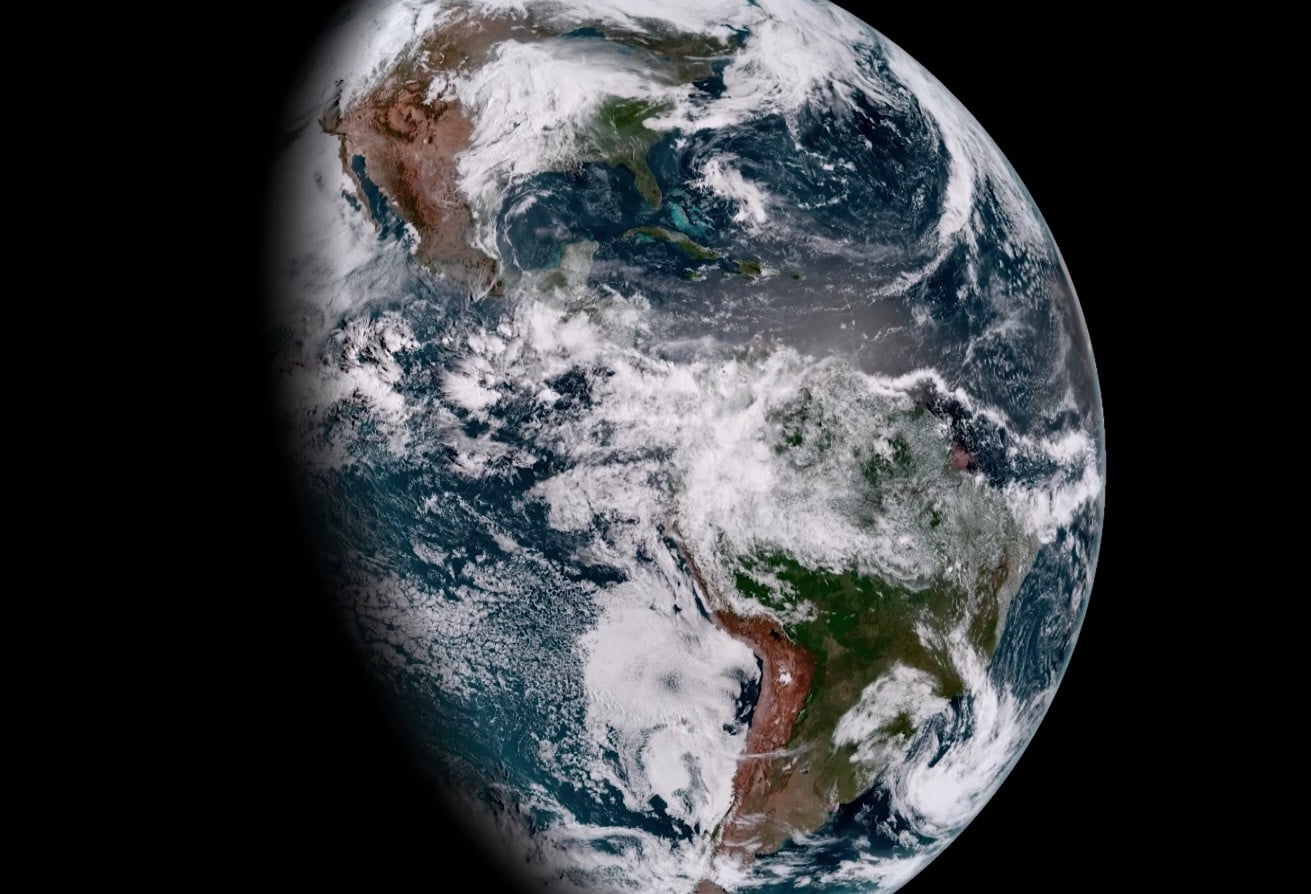The National Oceanic and Atmospheric Administration (NOAA) has shared the first images from its recently deployed GOES-18 weather satellite.
The stunning captures (below) were obtained by the satellite’s Advanced Baseline Imager (ABI) instrument as it orbited about 22,000 miles above Earth.
The ABI observes Earth via sixteen different channels. Each one detects energy at different wavelengths along the electromagnetic spectrum, enabling it to gather data on Earth’s atmosphere, land, and oceans. According to NOAA, data from ABI’s channels can be combined to create imagery known as GeoColor, which looks similar to what the human eye would see from space. Analyzing the data in different ways enables meteorologists to highlight and examine various features of interest.
“The ABI provides high-resolution imagery and atmospheric measurements for short-term forecasts and severe weather warnings,” NOAA explains on its website. “ABI data is also used for detecting and monitoring environmental hazards such as wildfires, dust storms, volcanic eruptions, turbulence, and fog.”
GOES-18 is orbiting Earth at a location directly above the equator while moving at the speed as our planet turns. This allows NOAA’s new weather satellite to constantly observe the same area of Earth to track weather conditions and hazards as they develop.
GOES-18, which launched from the Kennedy Space Center on March 1, is the third satellite in NOAA’s next-generation GOES-R series, and now operates alongside GOES-16 and GOES-17, which were deployed in 2016 and 2018, respectively .
NOAA’s new satellite is observing a huge area that includes the US West Coast, Alaska, Hawaii, Mexico, Central America, and the Pacific Ocean.
As it continues to calibrate its systems as part of post-launch testing procedures, GOES-18 has already observed storms across east Texas that produced large hail, strong wind gusts, and tornadoes, as well as wildfires and strong winds that blew up dust in New Mexico. Thick fog in Chile and thunderstorms in the Yucatan and Florida were also observed.
NOAA said recently that the launch of its new GOES satellites “forever changed the world of environmental monitoring and hazard detection in the Western Hemisphere.”
Editors’ Recommendations
